#dutch and flemish baroque painting
Explore tagged Tumblr posts
Photo

Gerard van Honthorst, Saint Sebastian, 1623 Oil on canvas
#hannibal#nbc hannibal#art that reminds me of hannibal#gerard van honthorst#17th century art#paintings and mostly 2d art#dutch and flemish baroque painting#baroque#saint vibes#st sebastian and st sebastian adjacent#as seen in hannibal's sketchbook
236 notes
·
View notes
Text

A Bouquet of Flowers, Clara Peeters, circa 1612
Oil on wood 18 ⅛ x 12 ⅝ in. (46 x 32 cm) The Metropolitan Museum of Art, New York City, NY, USA
#art#painting#clara peeters#baroque#baroque art#dutch golden age#17th century art#17th century#women artists#female artists#flowers#still life#oil#the met#flemish#dutch#1610s#100 notes
262 notes
·
View notes
Text

A Young Man Reading by Candlelight, circa 1630 Matthias Stom
#Matthias Stom#1630s#dutch art#flemish art#chiaroscuro#candlelight#light play#art#painting#art history#fashion#portrait#Baroque#Dutch Golden Age
86 notes
·
View notes
Text

Gonzales Coques (Flemish, 1614–1684) and Dirck van Delen (Dutch, c.1604/1605–1671) • Interior with Figures in a Picture Gallery • From 1667 until 1672 and 1706
#art#painting#fine art#art history#oil painting#gonzales coques#dirck van delen#flemish artist#dutch artist#gallery painting#baroque art#17th century european art#the painted room art blog#art blogs on tumblr#paintings of interiors#museum aesthetic
87 notes
·
View notes
Text
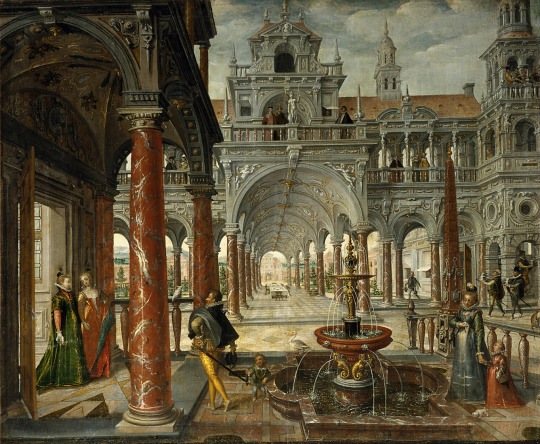
Palace Architecture with Elegant Figures and a Fountain by Dirck de Quade van Ravesteyn, Hans Vredeman de Vries and Paul Vredeman de Vries, 1596.
#classic art#painting#dirck de quade van ravestyn#hans vredeman de vries#paul vredeman de vries#dutch artist#flemish artist#16th century#baroque#architecture#palace#columns#fountain#people
50 notes
·
View notes
Text
The extravagant, outrageous, and often humorous outfits worn by subjects of old portraits.
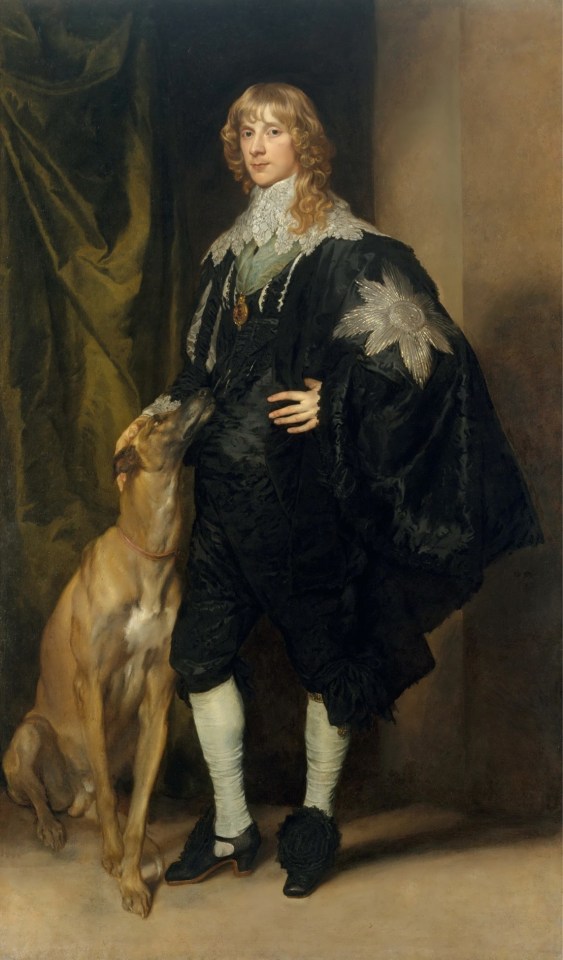
Anthony Van Dyck (Flemish, 1599-1641) • James Stuart, 1st Duke of Richmond and Lenox • 1633
The duke is sporting the latest in hairstyles - the lovelock. Also called a Bourbon lock, French lock, or heart breaker. He must've missed the scathing indicment below.
“Although considered quite fashionable, many people detested lovelocks, considering them unnecessary and extravagant. In 1628 a sixty-three page book denouncing lovelocks was published. The author, William Prynne, railed against the wearing of lovelocks as “Unlovely, Sinfull, Unlawfull, Fantastique, Disolute, Singular, Incendiary, Ruffianly, Graceless, Whorish, Ungodly, Horred [Horrid], Strange, Outlandish, Impudent, Pernicious, Offensive, Ridiculous, Foolish, Childish, Unchristian, Hatefull, Exorbitant, Contemptible, Sloathfull, Unmanly, Depraving, Vaine, and Unseemly,” according to Richard Corson in Fashions in Hair.”
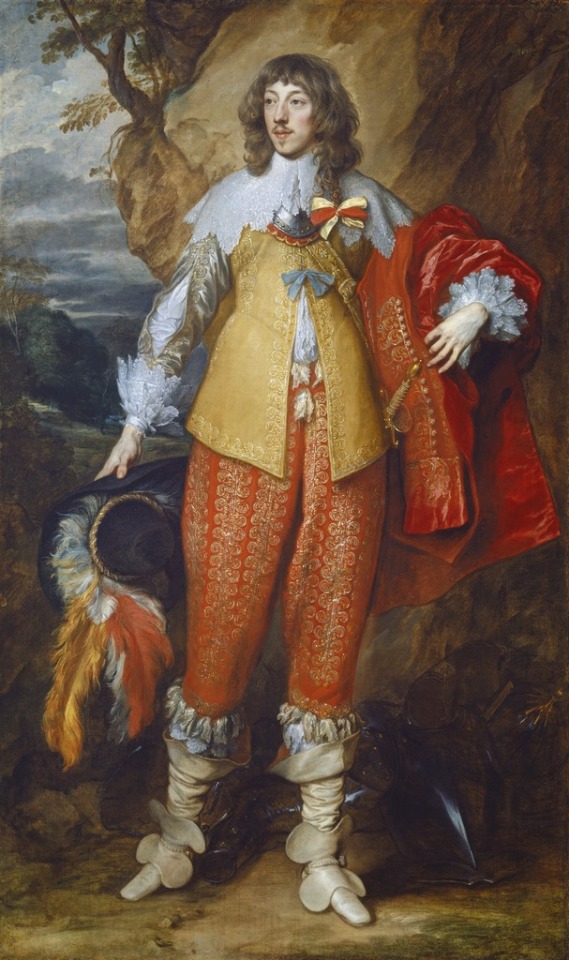
Anthony van Dyck (Flemish, 1599-1641) • Henri II de Lorraine • 1634 • National Gallery of Art, Washington, D.C.
Sorry, girls and boys, this gent is spoken for. Henri is wearing ribbons in his lovelock, which symbolizes a token from a romantic interest. He didn't read the memo, either.
#james stewart#duke of cambridge#portrait#art#flemish baroque#the resplendent outfit#dutch artist#art history#fashion history#painting#royal portraits#lovelock#anthony van dyck
41 notes
·
View notes
Text

Pieter Huys (1519-1584) - The bagpiper and the old woman
#belgian art#flemish art#flemish painter#flemish baroque#flemish school#renaissance#Hieronymus Bosch#oil painting#fine art#paintings#Pieter Huys#pieter bruegel#Antwerp#moma#flanders#art#dutch painting#adoration of the magi#vermeer#rembrandt#garden of earthly delights
3 notes
·
View notes
Photo

Pieter Claesz, Still life with nautilus cup and musk apple on golden chain, 1636, oil (?) on panel, 47 x 61 cm, LWL-Museum für Kunst und Kultur (Westphalian State Museum of Art and Cultural History), Münster
Source: Wikimedia Commons
#art#painting#Pieter Claesz#still life#vanitas still life#vanitas#memento mori#17th century#17th century art#17th century painting#17th century still life#baroque#baroque art#baroque painting#baroque still life#Dutch baroque#Flemish baroque
45 notes
·
View notes
Text


Road on the Dyke, Hobbema - Milkmaids with Cattle in Landscape, Rubens
"Let us define Dutch art by contrasting it with Flemish art. The flat meadows round antwerp present in themselves no other scene than the Dutch pastures to which native artists have given the expression of the most widespread tranquillity. But when Rubens handles these themes, the subject looks totally different: the earth rolls in vigorous waves, tree-trunks writhe passionately upwards, and their foliage is handled so completely in closed masses that Ruysdael and Hobbema in comparison appear as equally delicate silhouettists. Dutch subtlety beside Flemish massiveness.
In comparison with Hobbema the energy of movement in Rubens' design, Dutch design in general is restful, whether it be the rise of a hill or the curve of a petal. No Dutch tree-trunk has the dramatic force of the Flemish movement, and even Ruysdael’s mighty oaks look slender beside Rubens' trees. Rubens raises the horizon high and makes the picture heavy, the Dutch relation of sky and earth is radically different: the horizon lies low, and it even happens that four-fifths of the picture is given up to air.”
Heinrich Wolfflin, 1984, Principals of Art History
#art history#flemish art#Dutch art#Wolfflin#landscape aesthetic#cattle aesthetic#art blog#cows paintings#milkmaid#fields#campo#baroque#barroqefields#camponesa
2 notes
·
View notes
Text
The Golden Age of Dutch painting: a Prelude
Portrait of Susanna Lunden (née Fourment) or Le Chapeau de Paille, by Peter Paul Rubens (The National Gallery, London) Suzanne Fourment Lunden, portrayed above, was Baroque Flemish artist Peter Paul Rubens‘s sister-in-law. In 1630, four years after Rubens’s first wife, Isabella Bran(d)t, died of the plague, fifty-three-year-old Rubens married sixteen-year-old Hélène Fourment. His first marriage…

View On WordPress
#Antwerp#Dutch Golden Age of painting#Eighty Years&039; War#Flanders#Flemish Baroque artist#Hélène Fourment#History#Peter Paul Rubens#Suzanne Lunden#The Burgundian State#The Duchy of Brabant#Twelve Years&039; Truce
1 note
·
View note
Text
Baroque Winter Landscapes - The Sims 4 Loading Screens
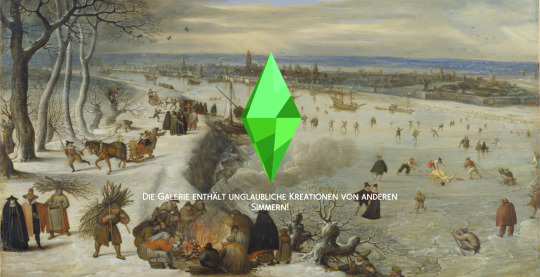
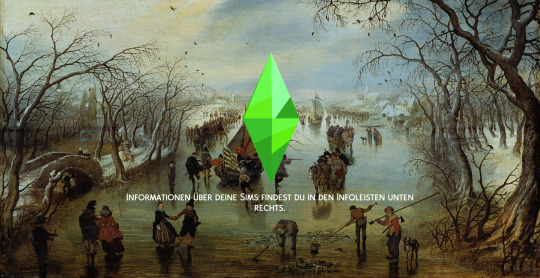
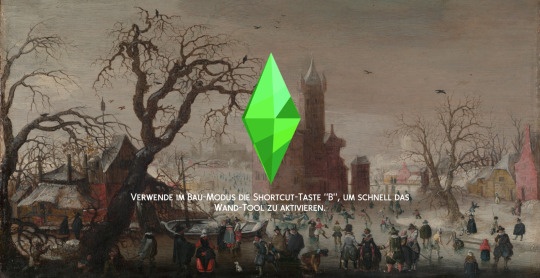



Much to my surprise I noticed it's December again and so I went looking for some winter-themed loading screens, but couldn't find any in the style and with the mood I had in mind. So, thanks to this great and very helpful Sims 4 Studio tutorial by sigma1202, I could create some myself!
This pack includes six baroque landscape paintings of Dutch and Flemish painters of the 17th (and late 16th) century. So you get some beautiful winter sceneries, snow-covered houses, lots of people ice-skating and many more details to discover while you're waiting for your game to load (which, as we know, can take its time...). Plus, I feel the atmosphere somehow perfectly fits the time before Christmas.
Download here (Google Drive, free)
You can download them seperately or all together in a zip.file. Please make sure to only place ONE loading screen in your mods folder at a time!
Please let me know if you encounter any issues!
You can find details about the paintings I used under the cut:
So downwards and always from left to right, we've got:
01 - Lukas van Valckenborch, View of Antwerp with Frozen Schelde, 1593, Städel-Museum Frankfurt am Main
02 - Adriaen Pietersz van de Venne, Winter, 1614, Staatliche Museen zu Berlin
03 - Christoffel van den Berghe, A Winter Landscape with Ice Skaters and an Imaginary Castle, ca. 1615-20, Met Museum New York
04 - Jan Brueghel the Younger (attributed), Snowy Landscape, after 1625, Museo del Prado Madrid
05 - Aert van der Neer, Winter Landscape with Ice Skaters at Sunset, 1655/60, Staatliche Museen zu Berlin
06 - Aert van der Neer, Sports on a Frozen River, ca. 1660, Met Museum New York
The links lead to the paintings in the respective museum's online collection, in case you want to know more details or take a closer look at them without a rotating plumbob in the way 😅
#the sims 4#sims 4#ts4#the sims 4 loading screens#sims 4 loading screens#ts4 loading screens#loading screens#loading screen#the sims 4 loading screen#sims 4 loading screen#ts4 loading screen
84 notes
·
View notes
Photo
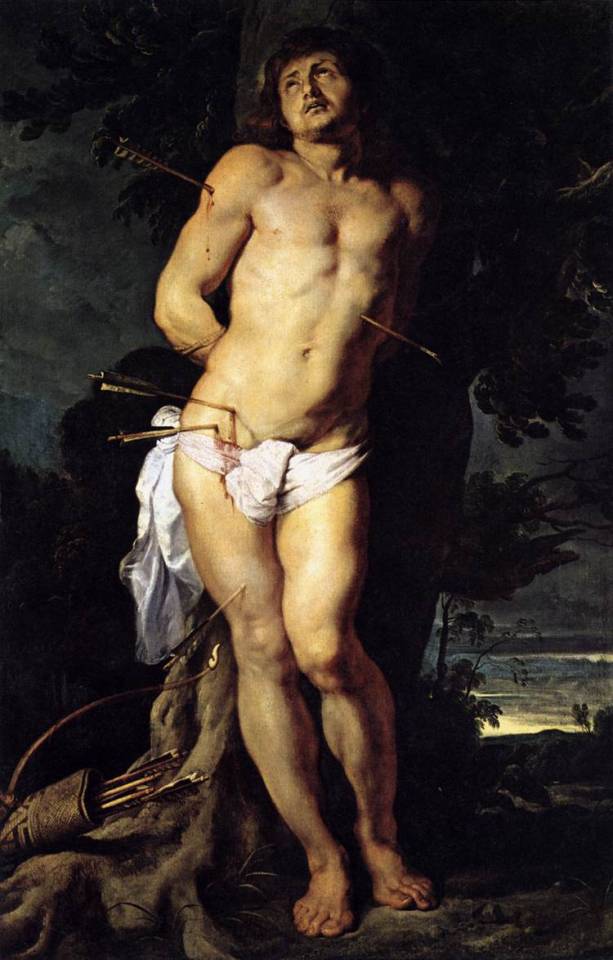
Peter Paul Rubens, St. Sebastian, 1614 Oil on canvas
#hannibal#nbc hannibal#art that reminds me of hannibal#peter paul rubens#17th century art#dutch and flemish baroque painting#baroque#paintings and mostly 2d art#saint vibes#st sebastian and st sebastian adjacent
110 notes
·
View notes
Text

Genoese Noblewoman, Anthony van Dyck, circa 1625-27
Oil on canvas 90 ⅞ x 61 ⅝ in. (230.8 x 156.5 cm) The Frick Collection, New York City, NY, USA
#art#painting#anthony van dyck#baroque#1620s#17th century#17th century art#oil#portrait#the frick#flemish#dutch
91 notes
·
View notes
Text

The Union of Earth and Water
Artist: Peter Paul Rubens (Flemish, 1577-1640)
Date: circa 1618
Medium: Oil on Canvas
Collection: Hermitage Museum, Saint Petersburg, Russia
Description
The Union of Earth and Water is a Baroque painting by Flemish artist Peter Paul Rubens, showing Cybele as the personification of earth holding the horn of plenty and Neptune as the personification of water in the center. The pair is crowned by the goddess Victoria and the union is heralded through a conch by the Triton below. The union symbolizes fertility, wealth and prosperity, specifically the city of Antwerp and the river Scheldt whose mouth in Rubens' times was blocked by the Dutch depriving Flanders of the access to the sea.
#allegorical art#baroque#flemish artist#peter paul rubens#european#17th century art#oil on canvas#hermitage museum#cybele#horn#neptune#goddess victoria#triton#symbolism#fertility#wealth#prosperity
15 notes
·
View notes
Text

Joan of Arc
Artist Peter Paul Rubens (Flemish, 1577 - 1640)
Date: c. 1620 and after 1640
Medium: Oil on canvas
Collection: North Carolina Museum of Art
Description
This painting depicts Joan of Arc, a French peasant born during the Hundred Years’ War (around 1412). She had visions in which Catholic saints told her she would save France from the English. She was about 17 years old when she courageously led French troops against the English siege of Orléans in 1429. The siege of Orléans had been going on for six months when Joan of Arc and her troops arrived. Nine days after they joined the fight, the siege was lifted.
Joan was 19 years old when she was captured by the English and their French allies and burned at the stake for heresy, or “deviant” behavior (which included wearing men’s clothing) in 1431. Joan of Arc is a well-known martyr (a person who is killed because of their beliefs). In 1920 the Catholic Church declared her a saint. She is the patron saint of soldiers and of France.
Flemish artist Peter Paul Rubens is best known for his religious and mythological paintings. He is considered the most influential artist of the Flemish baroque tradition. He painted Joan of Arc more than 200 years after she was killed, during the ongoing war between the Protestant Dutch and the Catholic Flemings. This painting represents the artist’s religious beliefs and the importance that the Catholic Church placed on honoring its martyrs and heroes.
#oil paint#joan of arc#peter paul rubens#flemish painter#baroque#17th century painting#martyr#woman#custome#crucifix#catholicism#drapes#boots#helmet#french#baroque style#gloves#rug
12 notes
·
View notes
Text


Τα δύο αστυνομικά μυθιστορήματα του Όλιβερ Μπανκς
Βρόμικα παιχνίδια που στήνονται γύρω από διάσημους πίνακες και διαχρονικά ζητήματα του χώρου της τέχνης περνούν μέσα στις δύο ιστορίες με τρόπο οικείο και διαφωτιστικό
ΠΙΝΑΚΕΣ, ΔΗΜΟΠΡΑΣΙΕΣ, ΧΡΩΜΑΤΑ, υπογραφές, τελάρα, κορνίζες, μαχαίρια, αίματα, συμβόλαια, χρήματα, δολοπλοκίες, σκοτάδια. Και κάπου ανάμεσα σε όλα αυτά, η επιβλητική μορφή του Έιμος Χάτσερ, του ντετέκτιβ κλοπών έργων τέχνης της Νέας Υόρκης. Του προσώπου που συνέθεσε με μαεστρία ο��Όλιβερ Μπανκς και που του «ανέθεσε» τις περίπλοκες υποθέσεις στα δύο μοναδικά του μυθιστορήματα.
Ο Όλιβερ Μπανκς, γεννημένος το 1941, υπήρξε ιστορικός τέχνης και καθηγητής Iστορίας της Tέχνης στη Νέα Υόρκη. Στη διάρκεια του σύντομου βίου του –πέθανε το 1991, σε ηλικία μόλις 50 ετών– ασχολήθηκε εντατικά με την τέχνη, έζησε μέσα σε αυτή, μελέτησε, δίδαξε και έγραψε για τους μεγάλους εκπροσώπους της τέχνης, ζωγράφους που όρισαν είδη και εποχές. Η διδακτορική του διατριβή, στο Πανεπιστήμιο της Καλιφόρνιας, είχε τίτλο «Watteau and the North: Studies in the Dutch and Flemish Baroque Influence on French Rococo Painting». Ωστόσο, παράλληλα με την ακαδημαϊκή του εργασία, ο Μπανκς θέλησε να δοκιμαστεί και στον χώρο της λογοτεχνικής γραφής. Δύο μόνο μυθιστορήματα πρόλαβε να γράψει: τον «Χαμένο πίνακα του Ρέμπραντ» («The Rembrandt panel», 1980) και τη «Μανία με τον Καραβάτζο» («The Caravaggio Obsession», 1984). Και τα δύο κυκλοφορούν στα ελληνικά από τις εκδόσεις Άγρα, σε εξαιρετικές μεταφράσεις από τον Ανδρέα Αποστολίδη.
Ο Μπανκς δεν μετακινήθηκε μακριά από το πεδίο που γνώριζε καλά. Έστησε δύο ιστορίες βγαλμένες από τη σκοτεινή κοιλιά του χώρου των έργων τέχνης. Στην πραγματικότητα, έγραψε για αυτό που γνώριζε βαθιά. Όλοι βλέπουμε και θαυμάζουμε, μα λίγοι μπορούμε να φανταστούμε τι σκοτάδι κρύβεται πίσω από τα πολύτιμα τελάρα του Καραβάτζο, του Ρέμπραντ, του Πικάσο, του Ντα Βίντσι και εκατοντάδων άλλων μεγάλων της ζωγραφικής.
Πηγα��νοντας σε μουσεία, εκθέσεις και γκαλερί, κοιτάζει κανείς τα αριστουργήματα αιώνων, μπορεί να διαβάσει και να μάθει την ιστορία κάθε έργου τέχνης. Λίγοι, όμως, γνωρίζουν τα βρόμικα παιχνίδια που στήνονται ανά τους αιώνες γύρω από αυτούς τους πίνακες – και όχι μόνο: γλυπτά, διακοσμητικά αντικείμενα, έπιπλα αντίκες και ένα σωρό άλλα έργ�� τέχνης έχουν κλαπεί και βρεθεί «όμηροι» στα χέρια αιμο��όρων και σατανικών εγκληματιών.
Η αγορά των έργων τέχνης είναι από τις πλέον σκληρές και απάνθρωπες. Τι κι αν το αντικείμενο κλοπής είναι ένα πανέμορφο έργο τέχνης, που φτιάχτηκε από έναν ευαίσθητο και ευφυή καλλιτέχνη; Αυτό δεν αφορά καθόλου τον εγκληματία, που μπορεί να σκίσει με ένα μαχαίρι τον καμβά περιμετρικά του τελάρου, για να αποσπάσει τον πίνακα από την κορνίζα του πιο εύκολα και γρήγορα.
Φυσικά, υπάρχουν πολλοί και διαφορετικοί κλέφτες. Οι προαναφερθέντες προχειρολόγοι, που μόνο σκοπό έχουν να κάνουν τη δουλειά τους γρήγορα και να εξαφανιστούν (άνθρωποι που δεν γνωρίζουν και πολλά περί τέχνης, και φυσικά ούτε για αυτό που κλέβουν), αλλά κι οι άλλοι, εκείνοι που θα μπορούσαν να χαρακτηριστούν και «ειδικοί» των έργων τέχνης. Εκείνοι, δηλαδή, που έχουν μελετήσει και γνωρίζουν επακριβώς την αξία αυτών που κλέβουν, που σέβονται και μεταχειρίζονται με απόλυτη ακρίβεια και προσοχή τα έργα (τα αποσπούν προσεκτικά από τα σημεία που εκτίθενται, τα συσκευάζουν, τα μεταφέρουν με αυξημένα μέτρα προστασίας).
Για αυτούς μιλά ο Μπανκς στα δύο του μυθιστορήματα, που ενδύονται τον αστυνομικό μανδύα –και πράγματι η πλοκή τους μιμείται τις τεχνικές μεγάλων αστυνομικών μυθιστορημάτων–, στα οποία όμως το ενδιαφέρον του συγγραφέα εστιάζεται αλλού. Αν προσπεράσει ο αναγνώστης τον αστυνομικού τύπου σκελετό των βιβλίων, βρίσκεται ενώπιον ενός υποκόσμου που μιλά και δρα εν κρυπτώ, που δολοφονεί μικροεμπόρους, γκαλερίστες, στον οποίο οι απειλές και οι εκβιασμοί αποτελούν καθημερινότητα. Μεγάλα και διαχρονικά ζητήματα του χώρου της τέχνης περνούν μέσα στα βιβλία αυτά με τρόπο οικείο και διαφωτιστικό. Ο απλός θεατής και λάτρης της τέχνης δεν δύναται να γνωρίζει τη σκοτεινή ιστορία κάποιων έργων, από ποια χέρια έχουν περάσει για να καταλήξουν στους τοίχους μεγάλων μουσείων ανά την υφήλιο.
Ένα μεγάλο θέμα, αυτό των πλαστών έργων τέχνης, ο Μπανκς το χρησιμοποιεί και στα δύο μυθιστορήματά του, μα κυρίως στον «Χαμένο πίνακα του Ρέμπραντ», όπου ένας πίνακας που αποδίδεται στον Ρέμπραντ φτάνει στα χέρια του Σάμιουελ Βάινστοκ, ενός Βοστονέζου εμπόρου έργων τέχνης. Μέσα από μια σειρά απίστευτων διαπλοκών και μηχανορραφιών, ο Μπανκς σκιαγραφεί τη διαδικασία που υφίστανται τα έργα τέχνης προκειμένου να αποσαφηνιστεί �� αυθεντικότητά τους.
Καθώς η αγορά έργων τέχνης αφορούσε πάντοτε μια συγκεκριμένη μερίδα ανθρώπων, που έχουν την οικονομική δυνατότητα να τα αποκτήσουν, οι άνθρωποι στους οποίους ο Μπανκς δίνει φωνή μέσα στα βιβλία του είναι άνθρωποι που γνωρίζουν πολύ καλά τις ποιότητες, τις νοοτροπίες και τα όρια αυτών των εύπορων πελατών. Όπως επίσης και των ανθρώπων που εμπορεύονται τα έργα αυτά. Ο Μπανκς τους γνωρίζει, έχει ζήσει ανάμεσά τους, έχει μυρίσει το χνότο τους, έχει σταθεί πλάι τους τις στιγμές των κρίσιμων αγοραπωλησιών.
Πώς αλλιώς θα μπορούσε να τους πλάσει, να τους μετασχηματίσει σε λογοτεχνικούς ήρωες, να τους δώσει αιμάτινη μορφή και λόγο ρεαλιστικό; Διότι αυτό πετυχαίνει με τη γραφή του ο Μπανκς: να ακούς και να βλέπεις αυτούς τους ανθρώπους δίπλα σου, να μπαίνεις ολόκληρος μέσα στις μισοσκότεινες (βλ. το περίφημο κιαροσκούρο του Καραβάτζο) αίθουσες, να στέκεσαι πίσω από το γραφείο του εμπόρου, δίπλα σε στοιβαγμένα τελάρα πινάκων. Γιατί πίσω από τη λάμψη της τέχνης υπάρχει πολύ σκοτάδι. Όπως χαρακτηριστικά αναφέρει σε κάποιο σημείο της «Μανίας» ο Μπανκς: «Οι άνθρωποι που επιλέγουν τα μουσεία για εργασία τους συχνά το κάνουν για ν’ αποφύγουν τις δυσάρεστες καταστάσεις […] για να καταφέρουν τα μουσεία να επιβιώσουν στο μέλλον, θα έπρεπε οι εργαζόμενοι σ’ αυτά να πάψουν να τα θεωρούν ως ησυχαστήρια και να τα μετατρέψουν σε ετοιμοπόλεμα φρούρια».
Δεν θα είχε νόημα να περιγράψει κανείς, στο πλαίσιο ενός άρθρου, τις πλοκές των δύο αυτών μυθιστορημάτων, εν περιλήψει. Σημασία έχει να ανατρέξει ο αναγνώστης στα ίδια τα βιβλία, να τα πιάσει στα χέρια του, να τα μυρίσει, να τα ξεφυλλίσει, να τα διαβάσει. Να παραμερίσει τη βελούδινη κουρτίνα του μουσείου και να μπει λαθραία στον πίσω χώρο, τον λιγοστά φωτισμένο, που μυρίζει κλεισούρα και αίμα. Να συναντήσει επικίνδυνους εγκληματίες, να πιάσει στα χέρια του έργα τέχνης και να αναρωτηθεί αν είναι αυθεντικά ή πλαστά, να σηκώσει τα χέρια του ψηλά μπροστά σε μια κάνη που τον σημαδεύει, να ταξιδέψει σε χώρες μακρινές, να κατέβει σε υπόγεια, να δει φορτηγά που φέρουν επιγραφή χαρτιών υγείας αλλά που μεταφέρουν πίνακες εκατομμυρίων, εγκύους να βγάζουν την ψεύτικη κοιλιά τους ταυτόχρονα με το περίστροφο από την τσέπη τους.
Αυτά και άλλα πολλά μπορούν να αισθανθούν οι αναγνώστες, διαβάζοντας αυτά τα δύο βιβλία, που ��ι εκδόσεις Άγρα φρόντισαν και εξέδωσαν σε δύο τόμους, περιλαμβάνοντάς τα στη μικρόσχημη «μαύρη» σειρά των αστυνομικών τους βιβλίων.
Ιδιαίτερη μνεία: το επίμετρο της «Μανίας με τον Καραβάτζο» έχει επιμεληθεί ο πρόσφατα μεταστάς Κύριλλος Σαρρής (1950-2024). Εκεί, ο αναγνώστης θα διαβάσει εξαιρετικά ενδιαφέρουσες πληροφορίες, που συνοδεύουν τα μυθιστορήματα του Μπανκς και λειτουργούν επικουρικά. Μια εργασία γόνιμη και συγκινητική, αν σκεφτεί κανείς την «άτυπη» συνεργασία ανθρώπων μεταξύ τους: Μπανκς - Αποστολίδης - Σαρρής. Η τέχνη ενώνει τους ανθρώπους με δεσμούς που πολλές φορές παραμένουν αόρατοι. Αλλά για ποιον άλλο λόγο να έρχεται κανείς σε επαφή με έργα τέχνης, αν όχι για να συνδεθεί με άλλους ανθρώπους;
Daily inspiration. Discover more photos at Just for Books…?
3 notes
·
View notes